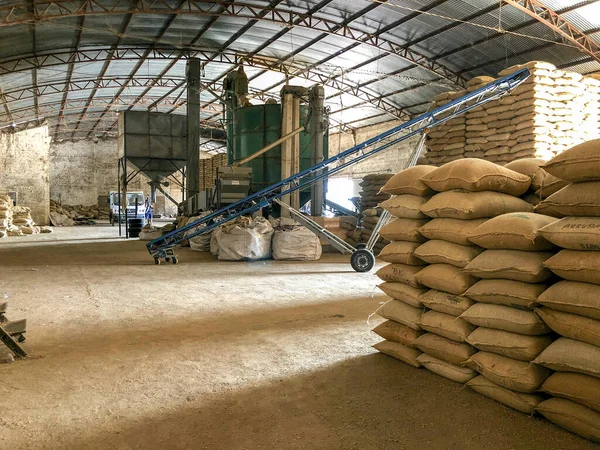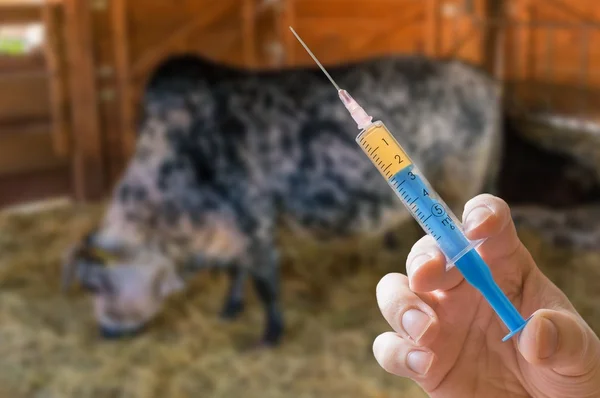The animal feed milling business in Kenya presents a highly profitable opportunity for entrepreneurs and investors. As the livestock sector continues to grow, so does the demand for quality animal feeds. From poultry, cattle, and fish to swine and sheep, various livestock require specific nutritional feeds for optimal growth and production.
This blog post explores the profitability of the animal feed business in Kenya, breaking down the portfolio of products you can sell, cost-profit analysis, and essential tips for success.
Which are the Best Animal Feeds to Produce and Sell
In the animal feed milling business, it’s essential to offer a diverse range of products to cater to the different needs of the livestock industry. Here are some of the common types of animal feeds that have high demand:
- Poultry Feed
- Broiler Feed: For chickens raised for meat production.
- Layer Feed: For chickens raised for egg production.
- Starter, Grower, and Finisher Feeds: These are specialized for different growth stages of poultry
- Ruminant Feed
- Dairy Cattle Feed: High in energy and protein to support milk production.
- Beef Cattle Feed: Designed for cattle raised for meat.
- Goat and Sheep Feed: For improved growth and milk production.
- Swine Feed
- Starter, Grower, and Finisher Feeds: Nutritionally balanced feed for pigs at various stages of growth.
- Aquaculture Feed
- Fish Feed: Specialized feeds for different fish species, including tilapia and catfish.
- Pet Feed
- Dog and Cat Feed: As urbanization grows, pet ownership increases, driving demand for commercial pet food.

Diversifying your product offerings ensures you can serve a wider range of customers, from small-scale farmers to large livestock producers.
Related: Is Maize Milling Business in Kenya Really Profitable in 2024
Which Equipment are Needed for a Feed Milling Business?
To start your milling business, you will need several pieces of equipment for different stages of production. Essential machinery includes:
- Feed Crusher: For grinding raw materials into finer particles.
- Feed Mixer: To blend the ingredients uniformly.
- Pellet Mill: For pressing the mixed feed into pellets.
- Cooling System: To cool the pellets after processing.
- Packaging Machine: For packing the finished products.
- Storage Bins: For both raw materials and the final feed products.
Investing in high-quality machinery ensures efficient operations and reduces downtime, which translates into higher profitability.
Which Licenses Are Required for Starting an Animal Feed Business in Kenya?
| License/Permit | Type | Cost | Details |
|---|---|---|---|
| Business Registration | Sole proprietorship/partnership/limited company | Ksh 1,000 (name registration); Ksh 30,000 (limited company) | Register your business name with the Registrar of Companies for legal recognition. |
| Business Permit | Single business permit | Starts around Ksh 8,000 | Allows you to legally operate your animal feed business within your local jurisdiction, issued by the county government. |
| Food Handling Medical Certificate | Health certificate | Ksh 600 | Ensures that all food handlers are free from diseases and fit to handle food. |
| Food Hygiene Certificate | Health certificate | Starts at Ksh 300 | Issued after a health inspection to ensure compliance with hygiene standards. |
| Fire Safety Certificate | Safety certificate | Approximately Ksh 3,000 | Conducted to ensure compliance with fire safety regulations, including having fire extinguishers. |
| Health Inspection Certificate | Health certificate | Varies; typically around Ksh 7,000 | A health inspector visits your premises to ensure safety and cleanliness for food preparation. |
| Kenya Bureau of Standards (KEBS) License | Quality assurance license | Approximately Ksh 20,000 | Required for producing animal feeds, ensuring products meet quality standards. |
Cost and Profit Calculations
The following table shows a sample profit and cost analysis for a mid-scale animal feed milling operation. This analysis is based on the production of 2,000 tons of feed annually, which covers equipment, raw materials, and operational costs.
| Item | Cost/Profit(Ksh) |
|---|---|
| Initial Investment | |
| Equipment (Mill, Mixer, etc.) | 2,500,000 |
| Raw Material (Initial stock) | 500,000 |
| Operational Costs | |
| Raw Material Cost (7,500 per ton) | 15,000,000 |
| Labor (Annual) | 1,200,000 |
| Utilities (Electricity, Water, etc.) | 1,000,000 |
| Miscellaneous Costs | 500,000 |
| Revenue | |
| Selling Price per Ton | 30,000 per ton |
| Total Revenue (2,000 tons) | 60,000,000 |
| Net Profit | 42,800,000 |
Animal feed milling can be highly profitable, with multiple income streams depending on the type of feed produced. The following is break down how profitability can be determined.
Initial Investment and Costs
Starting an animal feed milling business involves upfront capital investment. Typical costs include:
- Machinery and Equipment: Feed crushers, mixers, pellet mills, cooling systems, and packaging machines. Initial setup costs can range from Ksh 1.5 million to Ksh 3 million.
- Raw Materials: Sourcing maize, wheat bran, soy meal, fish meal, vitamins, and additives. An initial stock could cost about Ksh 500,000.
- Operational Costs: Salaries, electricity, water, and maintenance, averaging Ksh 200,000 per month.
Revenue Potential
The potential revenue in feed milling depends on production capacity and the selling price per ton of feed. For example:
- Production Capacity: A mill with an output of 2,000 tons of feed per year can generate significant revenue.
- Selling Price: With feeds retailing at an average price of Ksh 30,000 per ton, your yearly revenue could reach Ksh 60 million.
Profit Calculation
Here’s a simple scenario for a medium-scale feed mill:
- Revenue: Ksh 60 million (2,000 tons x Ksh 30,000)
- Total Costs: Ksh 17.2 million (raw materials, labor, utilities, etc.)
- Net Profit: Ksh 42.8 million annually.
These figures illustrate the enormous profitability potential for a well-run animal feed business. While actual profits depend on scale, efficiency, and market demand, a good feed mill can recover initial investment within two years.
Key Factors Driving Demand for Animal Feeds in Kenya
The profitability of the animal feed business in Kenya is driven by several key factors, making this a lucrative venture:
1. Growing Livestock Sector
The livestock sector contributes significantly to Kenya’s agricultural economy, employing over 60% of the population in rural areas. As more farmers engage in commercial livestock farming, the demand for nutritious, high-quality animal feeds is growing rapidly.
2. Population Growth and Urbanization
Kenya’s rapidly increasing population, which is expected to surpass 60 million by 2030, continues to push the demand for animal proteins like meat, milk, and eggs. This growing demand directly boosts the need for animal feeds to support the livestock sector.
3. Government Support for Agriculture
The Kenyan government is encouraging agricultural production through subsidies and support programs, including those targeting livestock production. These incentives are expected to spur higher demand for formulated animal feeds as farmers look to improve the quality and quantity of their output.
4. Increasing Awareness of Quality Feeds
Farmers are becoming more aware of the importance of feeding their livestock properly to increase productivity and profitability. With improved feed formulations that meet specific nutritional needs, demand for customized and scientifically formulated feeds continues to grow.
Key Ingredients for Animal Feed Formulation
Producing high-quality animal feeds requires a well-thought-out formulation process, ensuring each feed product provides the right balance of nutrients. Below are some common ingredients used in the formulation of animal feeds in Kenya:
- Energy Sources: Maize, sorghum, wheat bran
- Protein Sources: Soybean meal, fish meal, sunflower cake
- Vitamins and Minerals: Premixes containing vitamins, calcium, phosphorous
- Additives: Probiotics, enzymes, and acidifiers to improve digestion and feed efficiency
These ingredients should be carefully balanced to meet the nutritional requirements of different livestock species and life stages.
How to Maximize Profit in the Animal Feed Milling Business
To increase profitability in your animal feed business, consider the following tips:
1. Optimize Feed Formulation
By using cost-effective but nutritionally rich ingredients, you can reduce production costs while maintaining feed quality. Formulation software can help you achieve this balance.
2. Scale Up Production
Increasing your production capacity to serve more clients or exporting to neighboring countries like Uganda and Tanzania can help you maximize economies of scale, reducing per-unit costs.
3. Focus on Quality
Always prioritize the quality of your feeds. High-quality feeds lead to better animal productivity, which in turn creates loyal customers and boosts your reputation in the market.
4. Offer Additional Services
You can offer delivery services, bulk discounts, or even nutritional consulting to attract more customers and build lasting relationships.
Read Next:
Steps to Start an Animal Feed Milling Business in Kenya
Here’s how you can establish your own animal feed milling business:
- Market Research: Conduct a thorough analysis of the animal feed industry in Kenya. Identify your target market—whether it’s small-scale farmers or large dairy, poultry, and livestock operations.
- Develop a Business Plan: Craft a detailed business plan outlining your business objectives, product range, production capacity, and financial projections.
- Secure Funding: Depending on the scale of your operation, you will need a substantial investment. You can fund your business through savings, loans, or seeking investors.
- Business Registration and Permits: Ensure that your business is registered with the relevant authorities, such as the Kenya Bureau of Standards (KEBS) and the Ministry of Agriculture, for compliance and quality control.
- Purchase Equipment: Invest in the necessary equipment such as a feed mill, mixer, pelletizer, and packaging machine. Ensure that you have adequate storage facilities for both raw materials and finished products.
- Source Raw Materials: Establish a reliable supply chain for raw materials like maize, soybeans, and fish meal, ensuring that you maintain consistent quality.
- Start Production: With everything in place, start the production of your animal feeds and continuously monitor the quality.
- Market Your Products: Leverage both traditional and digital marketing strategies to reach your target customers. Utilize social media, create a website, and attend agricultural trade shows to market your products.
Conclusion
The animal feed milling business in Kenya is a high-potential and profitable venture that meets the needs of the country’s booming livestock industry. With the right products, sound financial planning, and effective marketing strategies, you can build a successful feed milling business and contribute to the agricultural sector’s development. By offering diverse feed options, maintaining high-quality standards, and managing costs effectively, your animal feed business can thrive in Kenya’s growing market.



